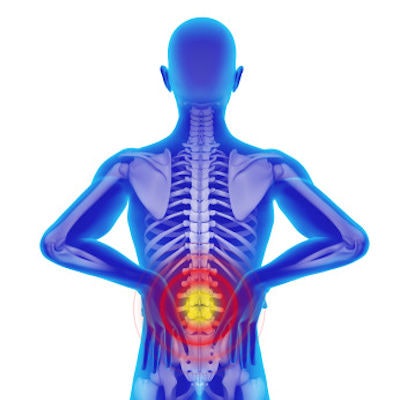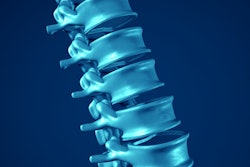
Women whose lumbar spine x-rays showed degeneration over time experienced little to no increase in lower back pain disability, according to research published May 20 in JAMA Network Open. The finding provides further evidence against routinely using diagnostic imaging of the lumbar spine.
In a large group of women in Chingford, England, researchers found no associations between reported levels of disability over six years due to lower back pain and lumbar segment degeneration, the presence of bone spurs, and disk space narrowing observed on spine x-rays.
"Clinicians may use the results of this study to educate patients and their colleagues that lumbar radiographic findings cannot provide prognostic information on back pain-related disability," wrote lead author Lingxiao Chen, a doctoral student at the University of Sydney, Australia.
Among all musculoskeletal problems, lower back pain is the most common reason for patients to seek primary care. Treatment guidelines do not recommend routinely using diagnostic imaging, except in cases with signs and symptoms of a serious underlying condition. Yet, studies indicate more than 15% of patients in primary care and about 25% in emergency care receive imaging referrals for lower back pain.
Currently, there is conflicting evidence and virtually no longitudinal evidence of an association between lumbar spine radiographic changes and the severity of back pain-related disability, according to the authors.
In this study, Chen and colleagues, including investigators from England and Sri Lanka, looked at both cross-sectional and longitudinal associations between lumbar spine radiographic changes and the severity of back pain related to disability. They drew 650 middle-aged, community-dwelling women ages 45 to 64 from a large cohort established for musculoskeletal studies in Chingford, England, in 1997.
Back pain-related disability was determined initially and on follow-up in 2003 using a questionnaire similar to the Oswestry disability index, a self-assessment tool that applies numerical scores to pain severity. Data were analyzed between April 17 and November 3, 2020.
A single radiographer performed the lateral lumbar spine x-rays centered on the L3 vertebra with patients in the left lateral recumbent position. A rheumatologist read all of the scans. Kellgren-Lawrence (K-L) grade-based scores were used to measure radiographic changes in lumbar spine segments, while disk space narrowing and osteophytes were assessed using standard validated methods.
The researchers hypothesized that a higher number of segments with lumbar radiographic changes would be associated with more severe back pain-related disability. Major findings in both the cross-sectional and longitudinal analyses included the following:
- Subjects with one or more K-L grade changes were no more likely to report disability compared with women with no observed changes.
- No statistically significant associations were found between changes in osteophyte scores and severity of back pain-related disability.
- No statistically significant associations were found between changes in disk space narrowing and severity of back pain-related disability.
Ultimately, as in previous studies, the changes observed in spinal radiographic imaging are likely part of normal, asymptomatic aging, the authors wrote.
Limitations the authors discussed included that participants were drawn from the Chingford 1,000 Women Study, which included middle-aged women in a suburban area east of London. All the women lived within five miles of the general practice and 98% of them were white. The researchers cautioned against generalizing the results to men, other age groups, other racial or ethnic groups, or other countries.
They suggested unnecessary imaging referrals for lower back pain may be encouraged by patient expectations that imaging results can provide valuable information about the cause and consequent management of their condition.
"Changes detected on lumbar radiographs provide limited value for decision-making regarding back pain management in this population," the authors concluded.




















